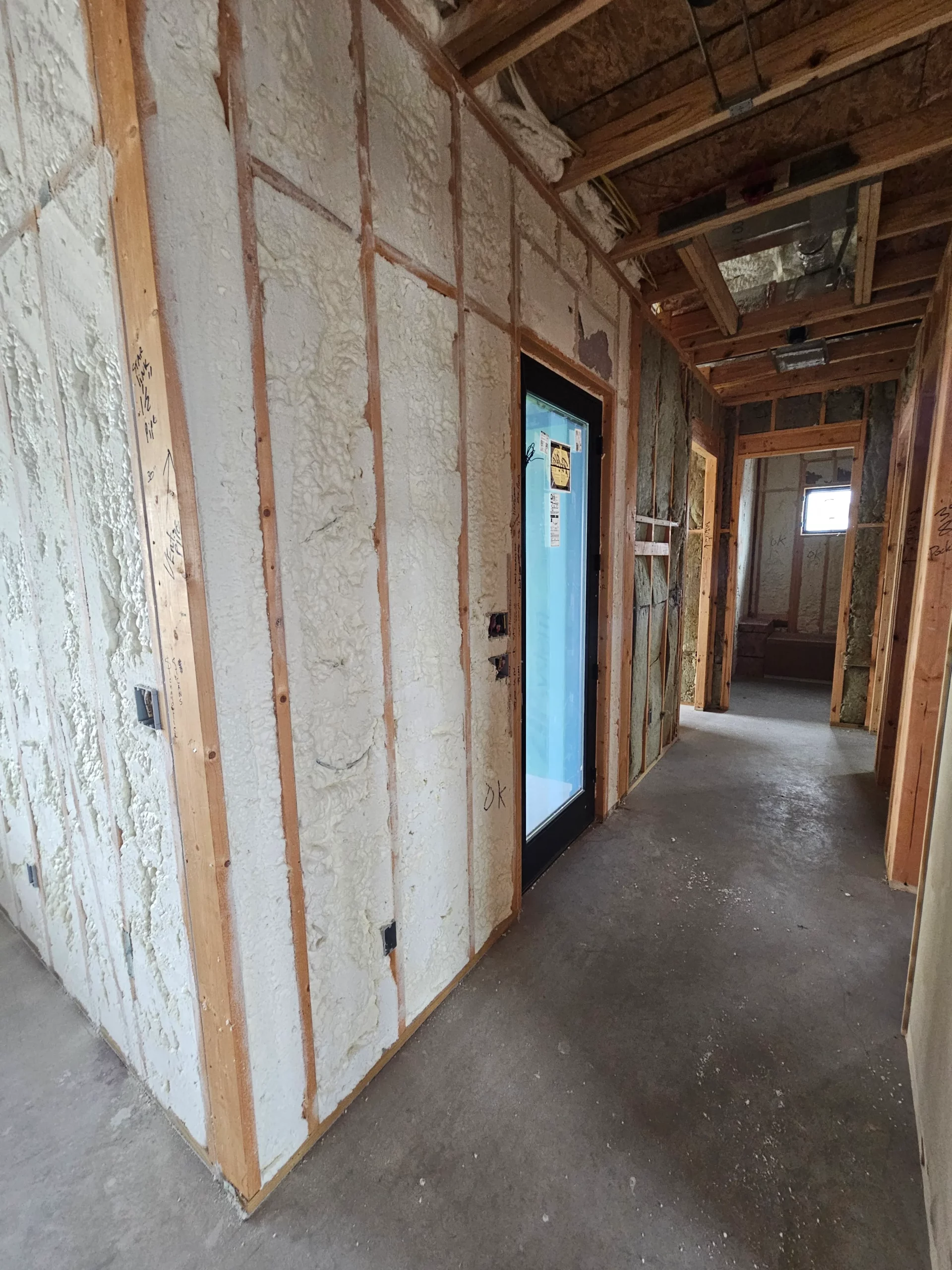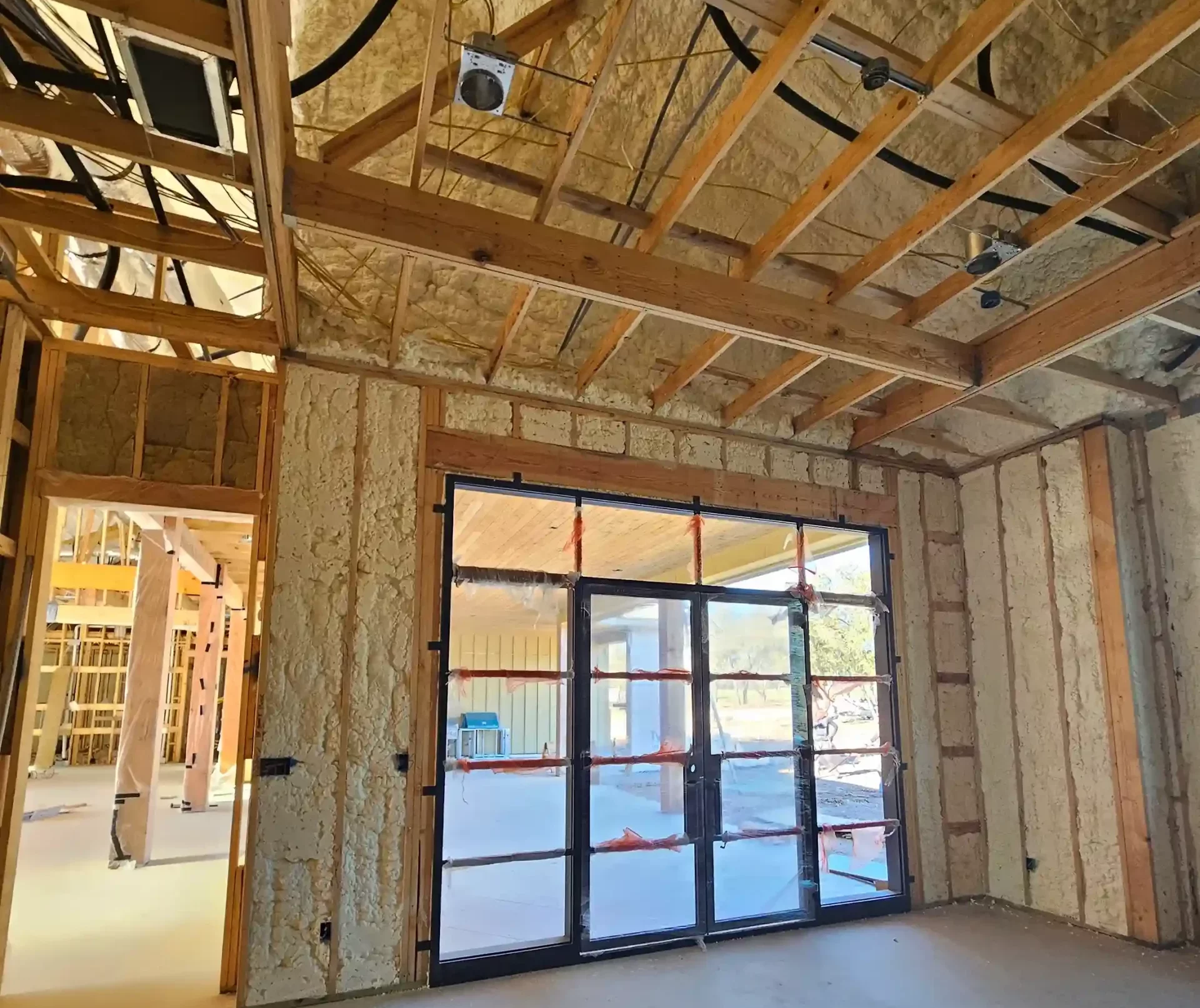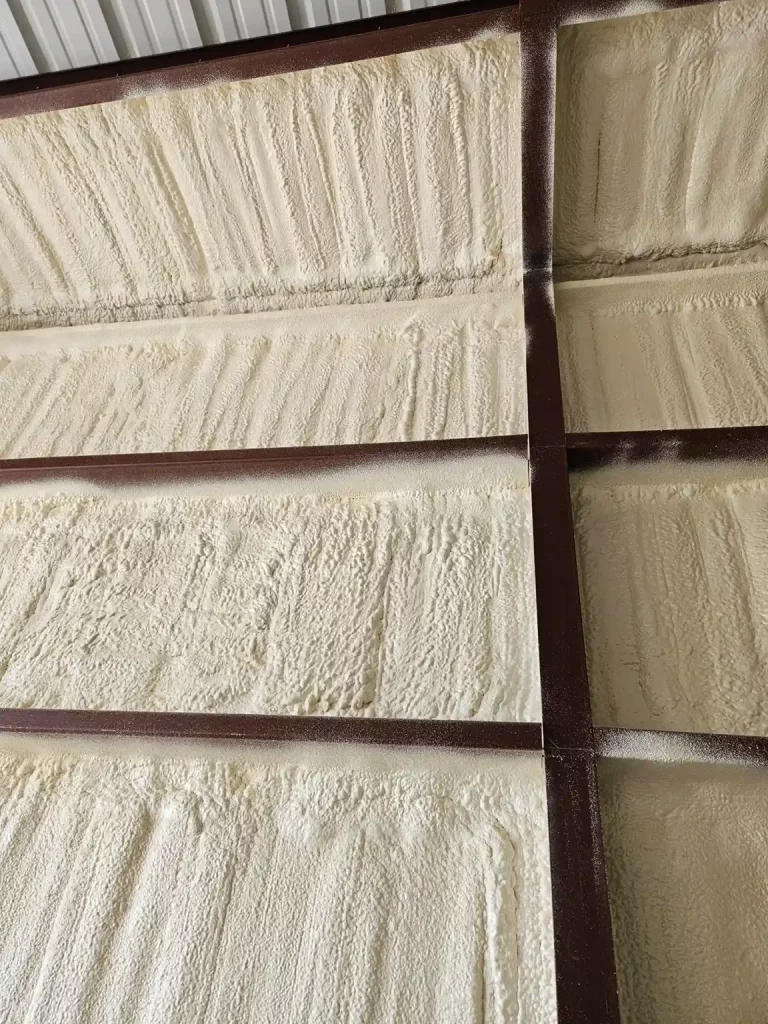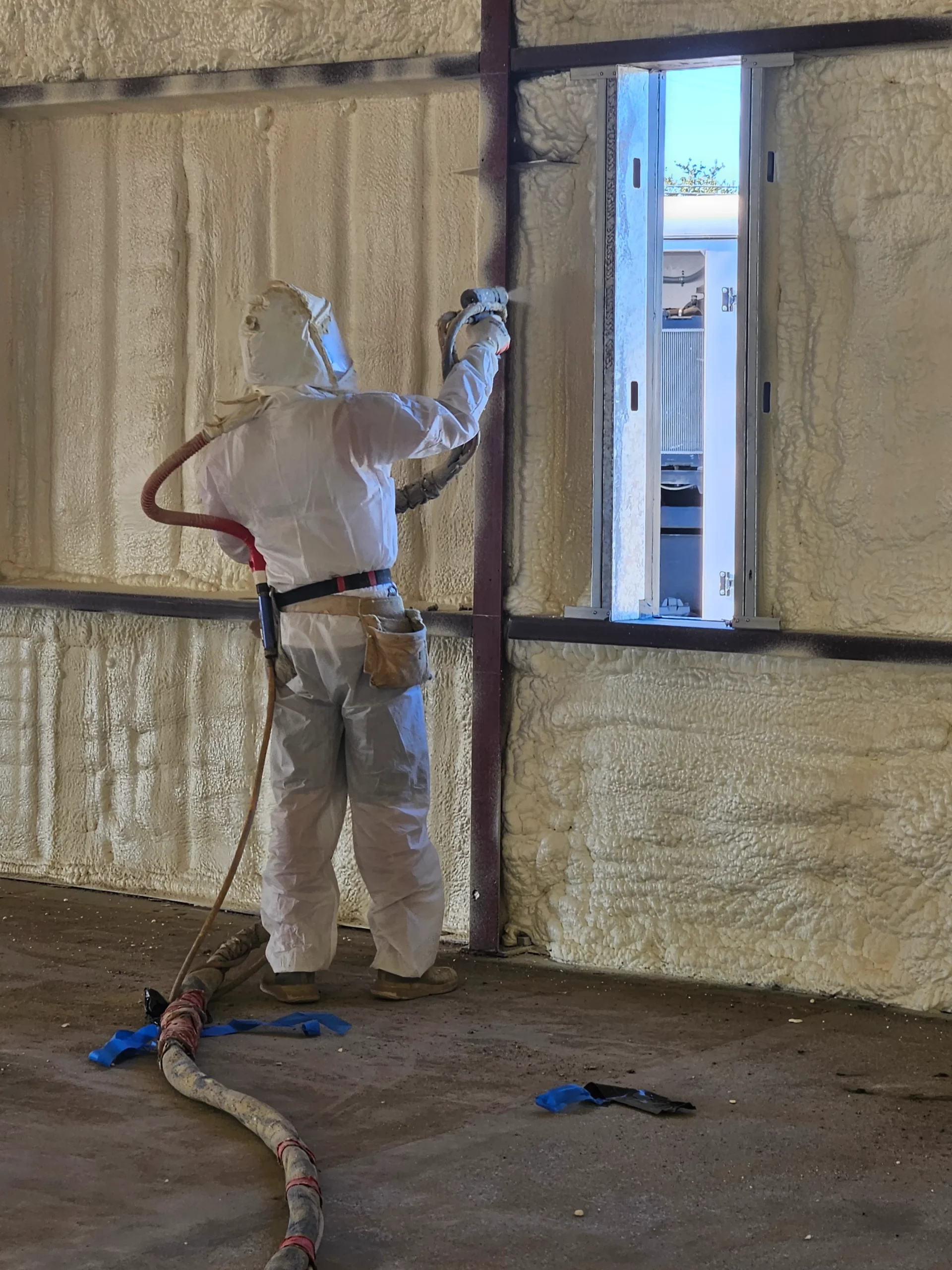

Spray foam insulation keeps rooms cooler during the summer primarily by creating an airtight seal. Unlike traditional insulation, which mainly slows down heat transfer through conduction, spray polyurethane foam (SPF) expands to fill every crack and gap. This stops the movement of hot, humid air from the outside into your home a process known as convection, which is a major source of heat gain. By forming this continuous air barrier, spray foam prevents conditioned, cool air from escaping and hot air from entering, which allows your air conditioning system to run more efficiently and maintain a consistent, comfortable temperature.
This article will explain the mechanisms behind how spray foam works, compare it to other common insulation materials, and provide practical considerations for homeowners. The information is based on extensive field experience in building science and thermal performance, offering a clear guide to how modern insulation technology directly impacts home comfort during hot weather.
To understand why spray foam is so effective, it’s helpful to know how heat gets into a house in the first place. Heat moves in three ways:
Most traditional insulation, such as fiberglass batts or cellulose, primarily addresses conductive heat. While they have good R-values (a measure of resistance to conduction), they do not stop air movement. Convection can account for a significant amount of heat gain, a fact supported by the U.S. Department of Energy, which states that air leakage can be responsible for a large portion of a home’s heating and cooling costs. Spray foam tackles both conduction and, most importantly, convection.
Spray foam is applied as a liquid that expands up to 100 times its original volume, hardening into a solid, continuous barrier. This expansion is the key to its performance. It conforms perfectly to any shape, sealing off the gaps around plumbing, electrical wiring, and framing that are impossible to seal with pre-cut insulation batts.
This monolithic seal effectively stops air leakage, which not only keeps hot air out but also prevents conditioned air from escaping. The result is a much more stable indoor environment where the HVAC system doesn’t have to cycle on and off constantly to fight infiltrating hot air.
Bonus Tip: In humid climates, this air barrier also blocks moisture-laden air. Because damp air feels warmer, reducing indoor humidity can make a room feel more comfortable at a higher thermostat setting, leading to even more energy savings.
While R-value is an important metric, it doesn’t tell the whole story. An insulation’s ability to stop air movement is just as critical for summer cooling. Here’s a look at how different types compare.
| Insulation Type | Typical R-Value (per inch) | Air Sealing Capability | Moisture Resistance |
|---|---|---|---|
| Open-Cell Spray Foam | 3.5 – 3.8 | Excellent | Good (vapor permeable) |
| Closed-Cell Spray Foam | 6.0 – 7.0 | Excellent | Excellent (vapor barrier) |
| Fiberglass Batts | 3.1 – 4.3 | Poor | Poor (can hold moisture) |
| Blown-In Cellulose | 3.2 – 3.8 | Fair (settles over time) | Poor (can absorb moisture) |
As the table shows, both types of spray foam provide excellent air sealing, which is where traditional materials fall short. This performance advantage is a major reason why the global spray foam insulation market is projected to continue its strong growth, according to analysis from Grand View Research.
In consistently warm climates, managing attic heat is one of the biggest challenges. A traditional vented attic can reach temperatures of 150°F or more in the summer, according to the U.S. Department of Energy, radiating that heat directly down into the living space below.
Applying spray foam directly to the underside of the roof deck creates what is known as an unvented or “conditioned” attic. This approach brings the attic inside the home’s thermal envelope. Instead of superheating, the attic stays within 10-15 degrees of the temperature in the house. This dramatically reduces the radiant heat load on your ceilings and makes the entire home easier to cool.
Bonus Tip: For coastal areas prone to high humidity and storms, closed-cell spray foam is an excellent choice. Its rigid structure can add strength to the roof deck, and it acts as a powerful moisture barrier, helping to prevent water intrusion and mold growth.
Choosing the right insulation involves more than just picking the product with the highest R-value. Homeowners should think about several factors first.

Yes, in many cases. Because spray foam dramatically reduces air leakage and heat gain, the home requires less cooling power. This can allow for the installation of a smaller, less expensive HVAC system in new construction or a reduced load on an existing unit.
Spray foam is an inert material that does not sag, settle, or degrade over time. It is expected to last for the life of the building.
There is a distinct odor during the application process. Installers use ventilation to manage this. The foam becomes fully inert and odorless once it has cured, typically within 24 hours.
Absolutely. Spray foam is often used in existing homes to upgrade attics, crawl spaces, and wall cavities. In walls, it can be injected into the empty space, though this is a more specialized process. Attics and crawl spaces are the most common and impactful retrofit applications.
Homes with spray foam insulation are often marketed as high-efficiency or “green” homes. The documented energy savings, improved comfort, and better indoor air quality can be attractive selling points for potential buyers.
Both are excellent at keeping a home cool because they both create an effective air seal. Closed-cell has a higher R-value per inch, making it technically a better insulator against conductive heat. The choice often depends on the specific application, budget, and climate. For a roof deck in a hot, humid climate, closed-cell is often preferred for its added moisture resistance.
Yes, especially open-cell spray foam. Its softer, more porous structure is very effective at absorbing sound waves, leading to a noticeably quieter indoor environment.
The key to keeping a home cool in the summer isn’t just about resisting heat; it’s about controlling air movement. Spray foam insulation excels because it addresses both. By providing a high R-value and creating a comprehensive air barrier, it stops the primary ways that summer heat invades a living space. Before making a decision, it’s important to evaluate your home’s specific trouble spots, consider your regional climate, and think about your long-term goals for energy efficiency and comfort.
For homeowners focused on complete building efficiency, our spray foam roofing services shares exciting updates on how we’re improving energy performance from top to bottom. Click here to know more about our spray foam roofing service.
For a detailed assessment of your home’s specific insulation requirements, a professional consultation is the best way to understand which solutions will work for your property. The team at Spray Foam Tech can provide a thorough evaluation. Contact an insulation specialist by calling (737) 777-9590 or sending an email to oldworldtx@hotmail.com to learn how modern insulation can improve your home’s comfort and energy performance.


